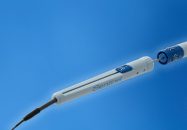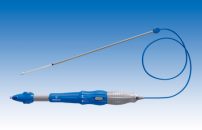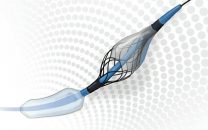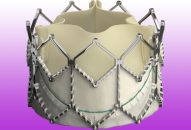This study seeks to prove the safety and efficacy of rapid left ventricular pacing through a 0.035” guidewire during aortic valvuloplasty and transcatheter aortic valve replacement (TAVR). Right ventricular temporary pacing placed through venous access during aortic valvuloplasty or during TAVR is time-consuming and, above all, associated with cardiac perforation and tamponade. Since…
Cerebral Protection in TAVR: Does It Improve Cognitive Function?
Neurological complications during transcatheter aortic valve replacement (TAVR) may be reduced with cerebral protection devices; this study was designed to explore that hypothesis. The study enrolled 363 patients undergoing TAVR in 19 sites and divided them in three arms: a safety arm (n = 123), a device imaging arm (n = 121), and a non-device imaging arm (n = 119). The…
Meta-analysis on Cerebral Embolic Protection in TAVR
Cerebral embolic protection is a strategy to prevent embolization of thrombotic or calcific debris during transcatheter aortic valve replacement (TAVR). A number of randomized and controlled studies have tested the safety and efficacy of various devices, though none of them have enough statistical power to show significant differences in end points. While preliminary…
Evolut R: Clinical Results Might Be Better than Those for First-Generation CoreValve
Two recent articles featured in JACC Cardiovascular Interventions showed that short term (at 30 days) outcomes of patients treated with the next-generation self-expanding Medtronic Evolut R valves could present several advantages compared to the original CoreValve, including recapturability. Both analyses reported similar rates of all-cause mortality and stroke. The study carried out by Dr. Jeffrey Popma as…
Post-Dilation of Self-Expanding Valves: Frequency, Usefulness, and Risks
This study explores the impact of balloon post-dilation on studies conducted in the United States assessing the CoreValve self-expandable valve. Procedural details of 3532 patients were examined to determine whether post-dilation was performed after valve implantation. Best practice guidelines recommend post-dilation to improve suboptimal outcomes, being the most frequent alternative for treating moderate or severe…
Asymptomatic Severe Aortic Stenosis in the Elderly: When to Intervene
This work studies the natural history of aortic stenosis and the optimal timing to intervene elderly patients with asymptomatic severe aortic stenosis. This disease is increasingly misdiagnosed in the elderly population, and this goes hand in hand with enhanced therapeutic options. Prior studies on the natural history of this disease were made on…
TAVR: Reasons to Consider Mitral Annular Calcification
Courtesy of Dr. Carlos Fava. Aortic valve calcification and mitral annular calcification have the same etiology and are frequently present in high-risk patients undergoing transcatheter aortic valve replacement (TAVR). The implications of mitral annular calcification for patients undergoing TAVR has not been entirely clarified yet. The study examined 782 patients with severe aortic stenosis who underwent…
4 Readmission Predictors after Successful TAVR
Readmissions are frequent after cardiovascular procedures and they significantly increase healthcare costs. Data on readmission need within the first month after successful transcatheter aortic valve replacement (TAVR) are limited. The registry included all TAVR patients surviving index hospitalization between January and February 2013 for readmission incidence, predictors, causes and costs within 30 days. …
Transcatheter Valve Thrombosis: Predictors, Incidence, and Events
This study sought to clarify the incidence and predictors of hypoattenuated leaflet thickening (assumed as leaflet thrombosis) imaging in transcatheter bioprosthesis. This study involved 70 consecutive patients who underwent transcatheter aortic valve replacement with the Edwards SAPIEN-XT device and were subjected to follow-up at 6 months and 1 year through multislice computed tomography (CT), echocardiographic data, and…
TAVR vs. Surgery: Valve Performance at Five Years (PARTNER I)
The aim of this study was to evaluate the long-term performance of transcatheter aortic valve replacement (TAVR) and surgically-implanted valves through longitudinal echocardiographic follow-up of the PARTNER I trial patients. The study included all patients receiving TAVR or undergoing surgery who had a post-implant echocardiogram at five years analyzed for peak systolic velocity, mean gradient,…
Post TAVR Cognitive Function at Short Term: Better or Worse?
There is little information on the short and mid-term evolution of cognitive function after transcatheter aortic valve replacement (TAVR). The aim of this study was to describe global changes in cognitive function and changes in specific cognitive domains one year after TAVR. Fifty one patients undergoing TAVR, median age 80, were prospectively followed…










